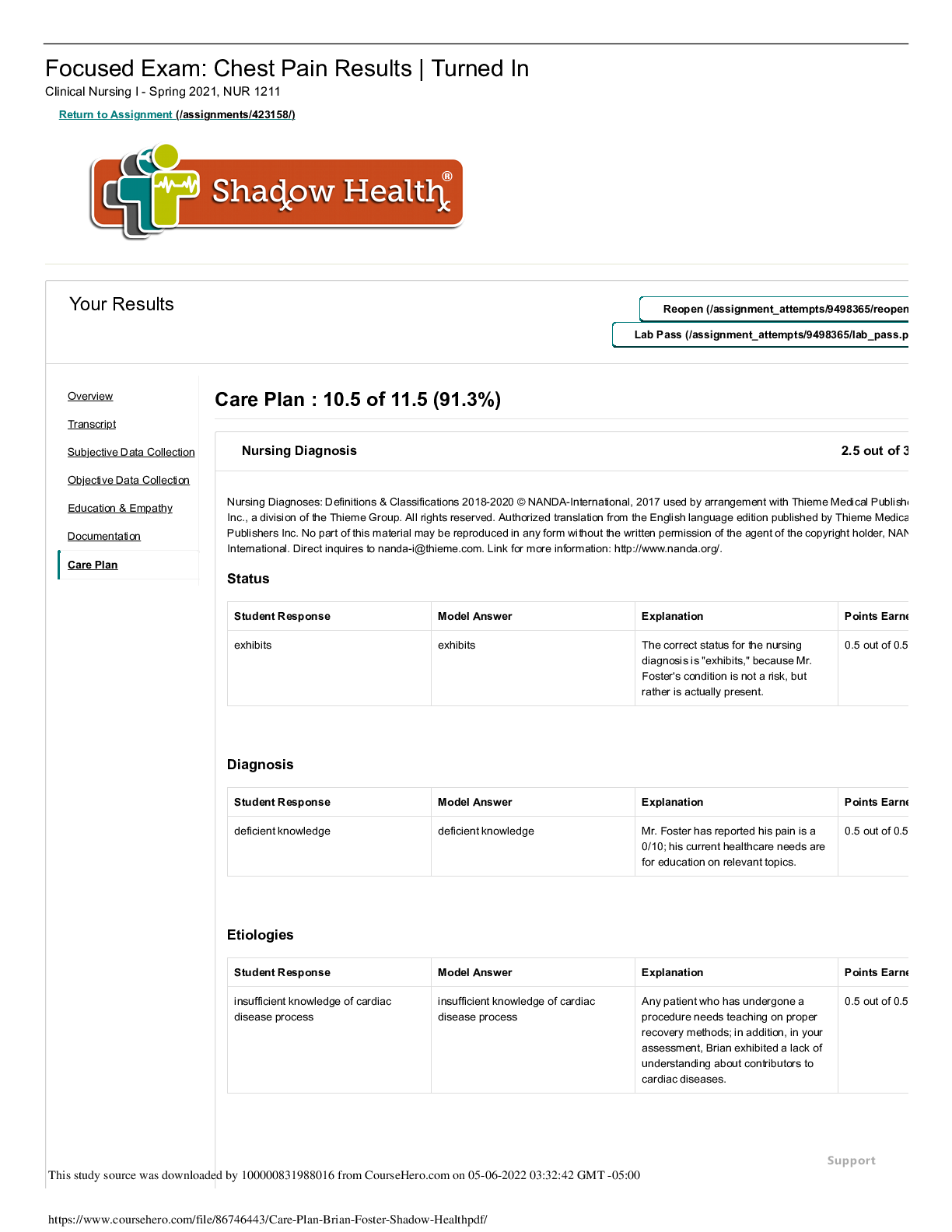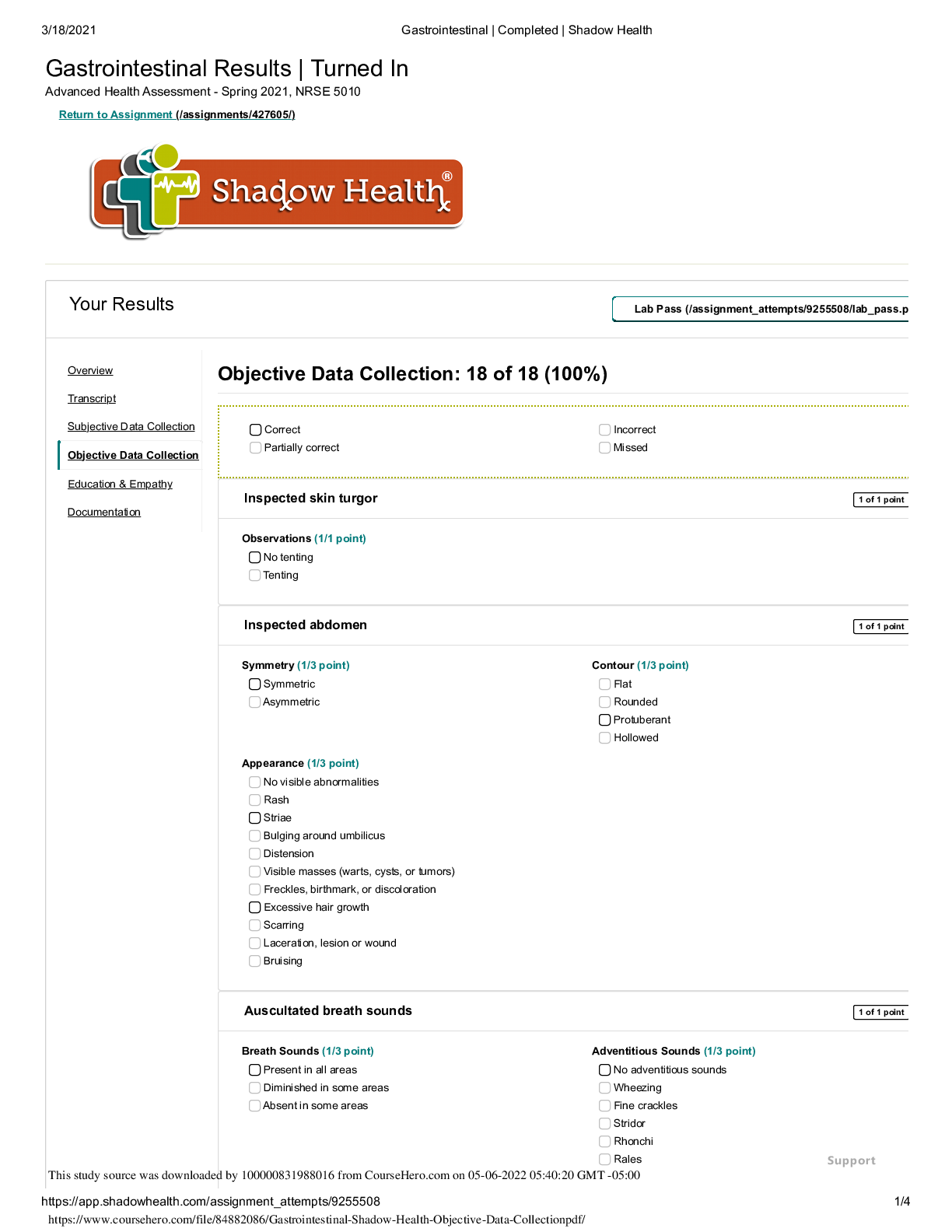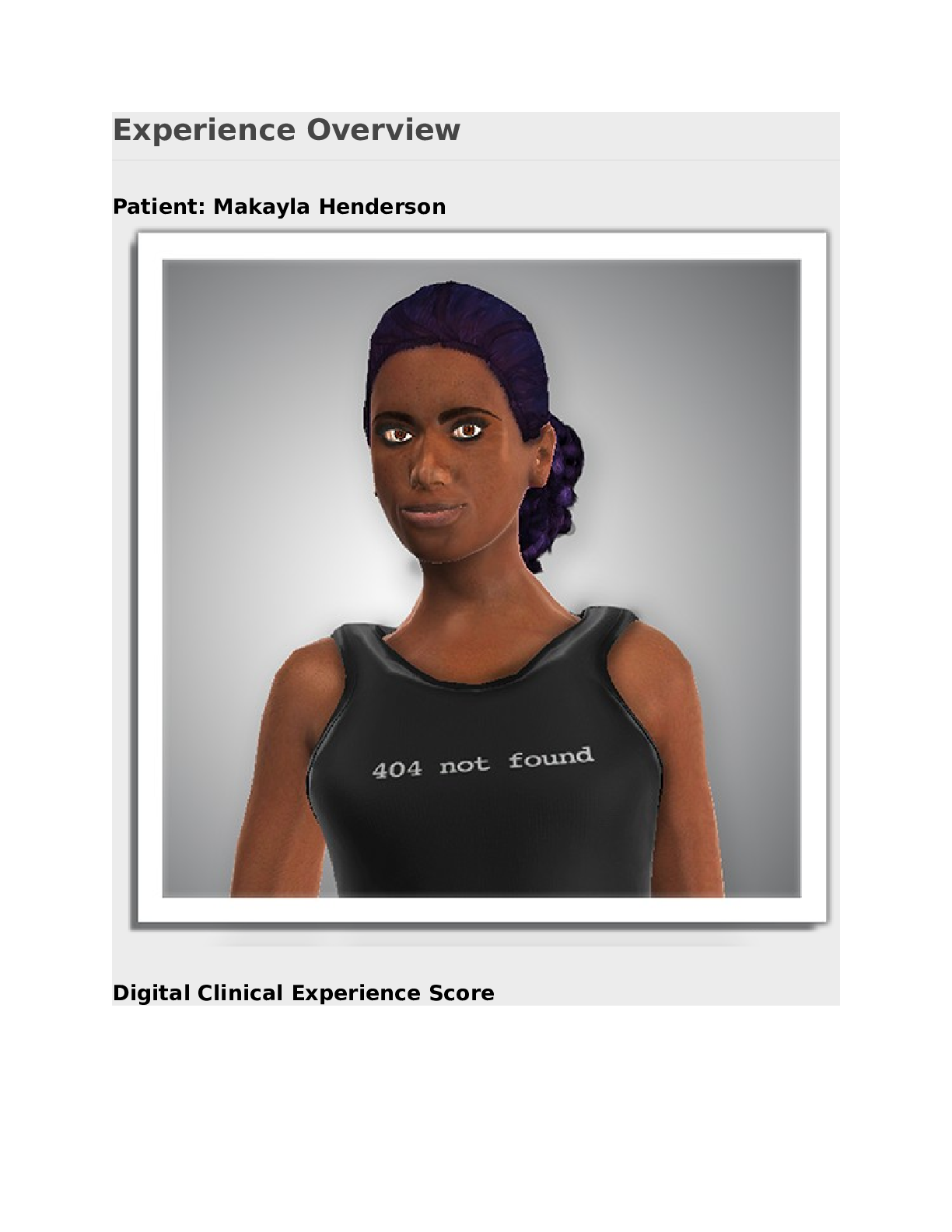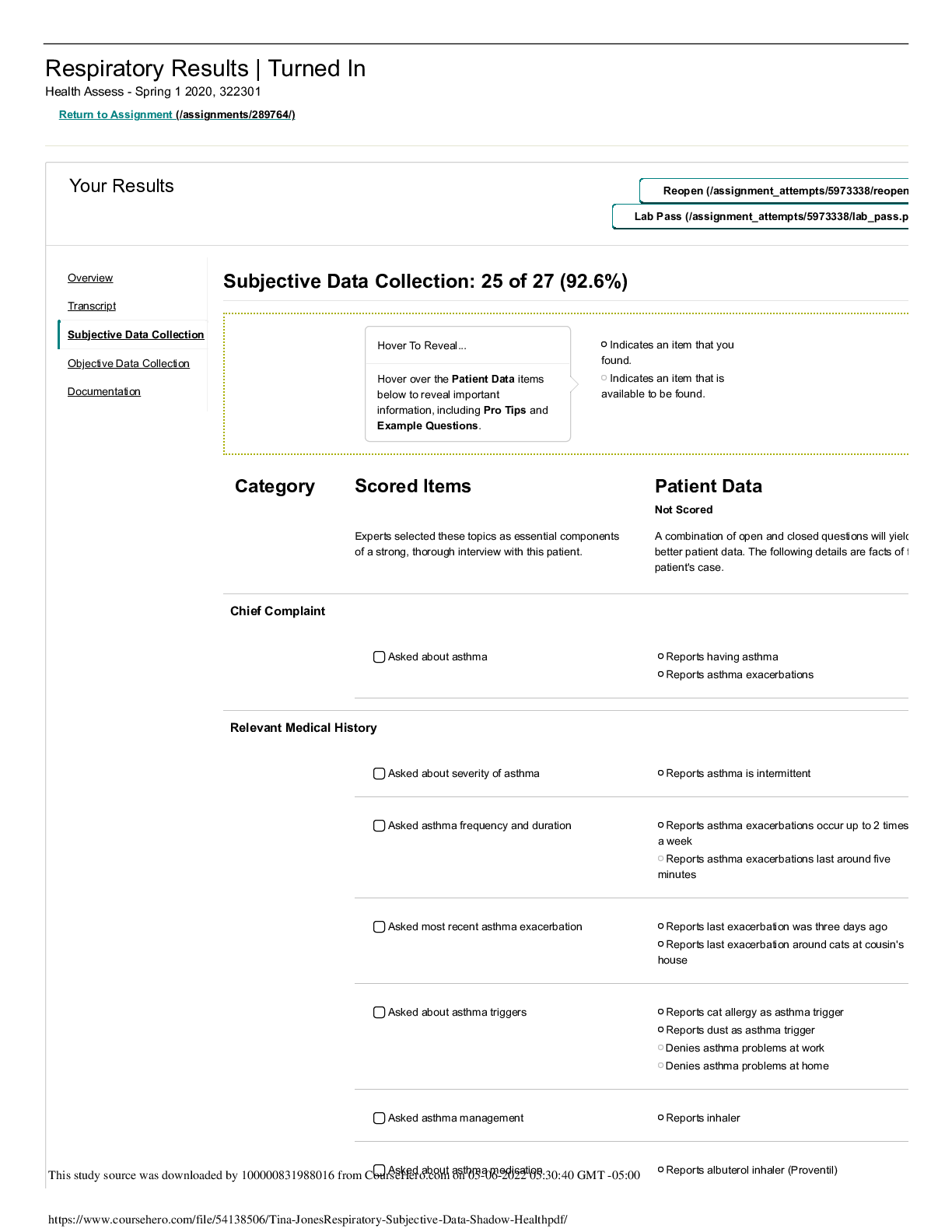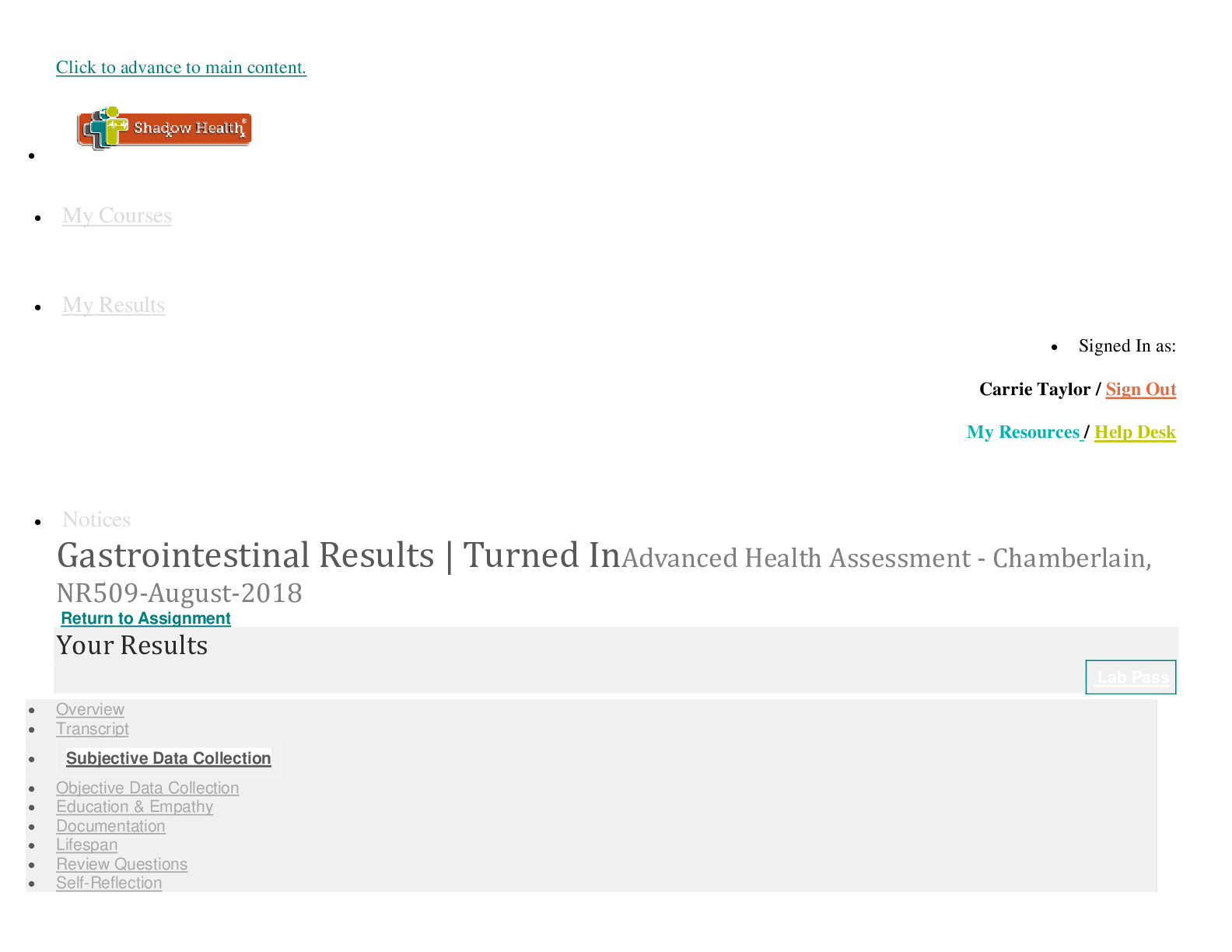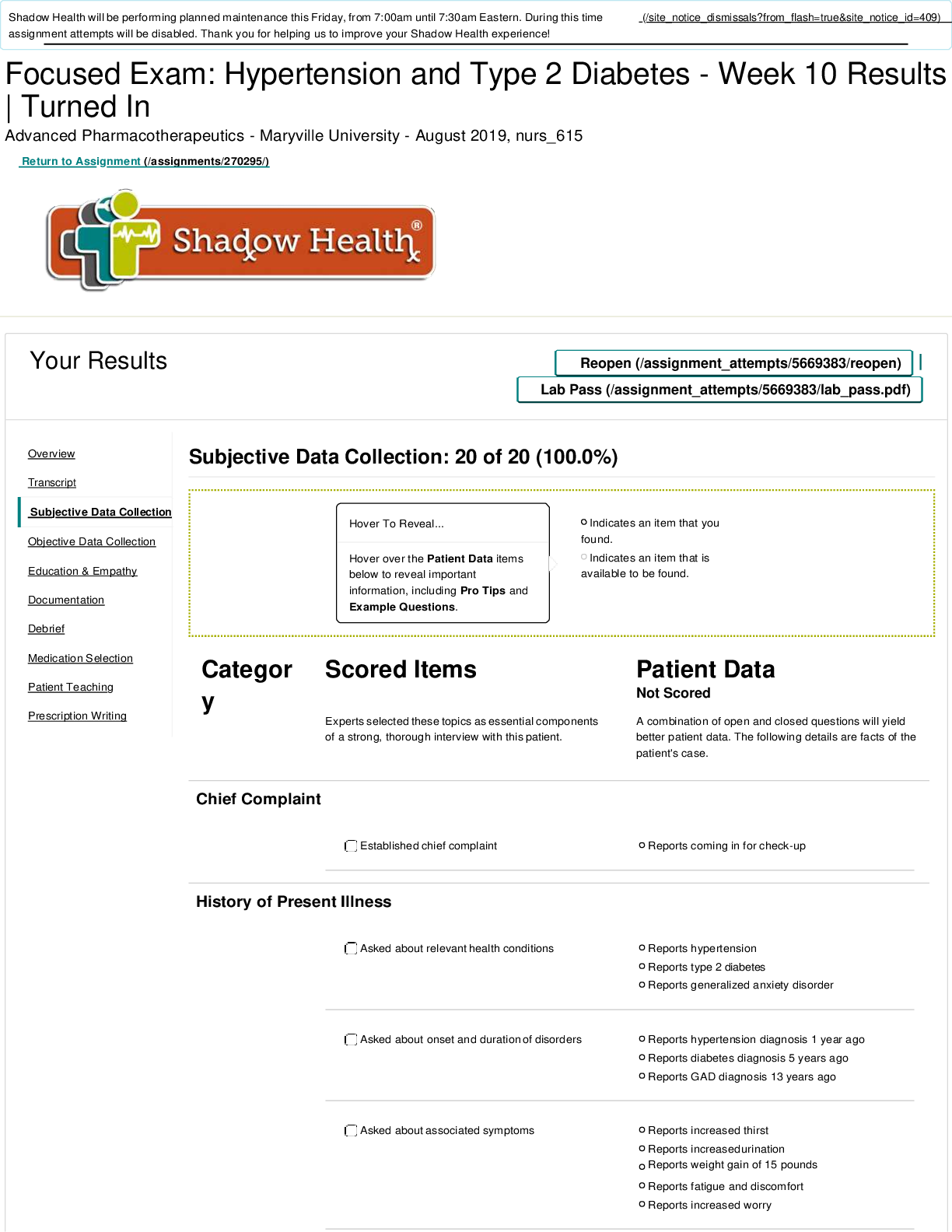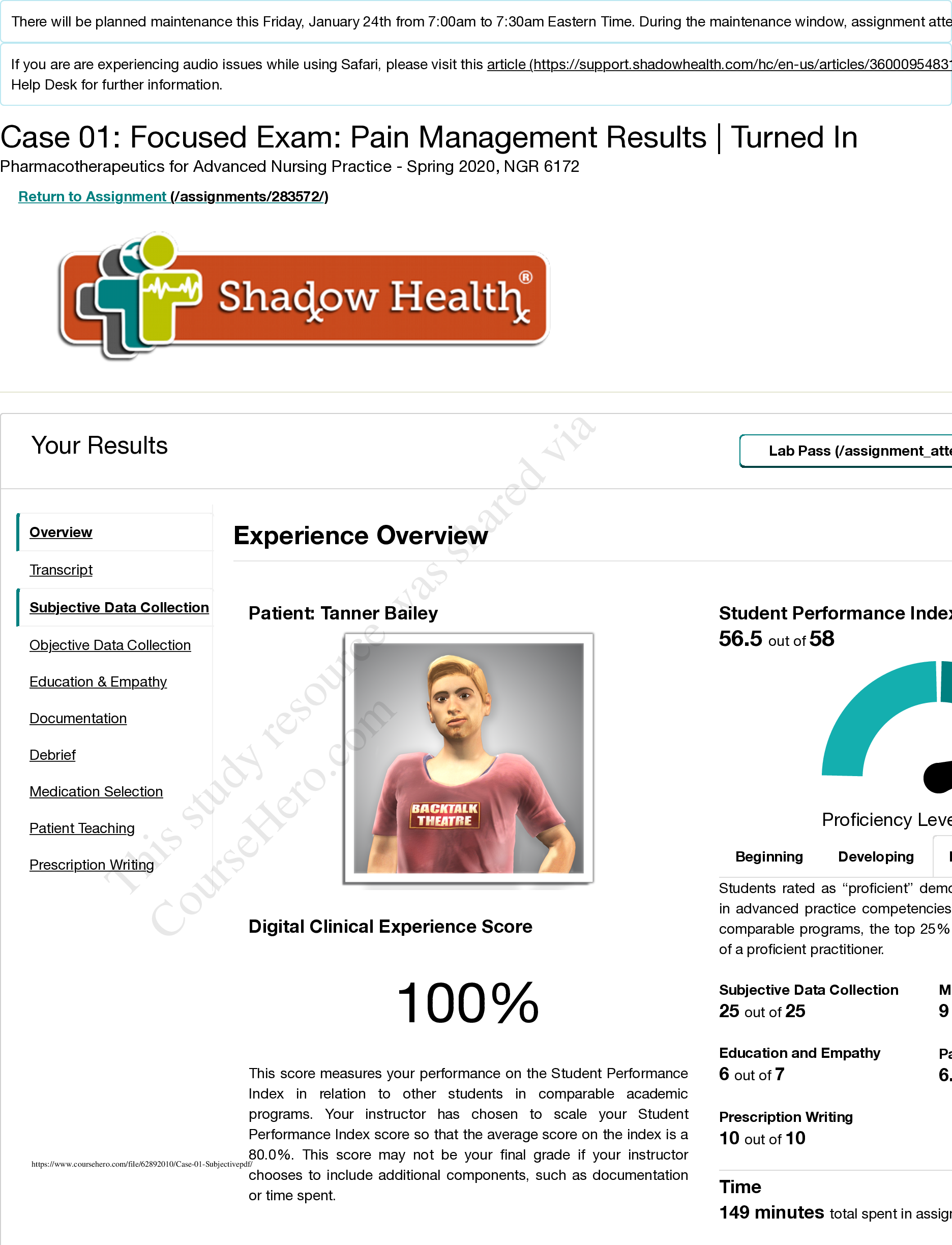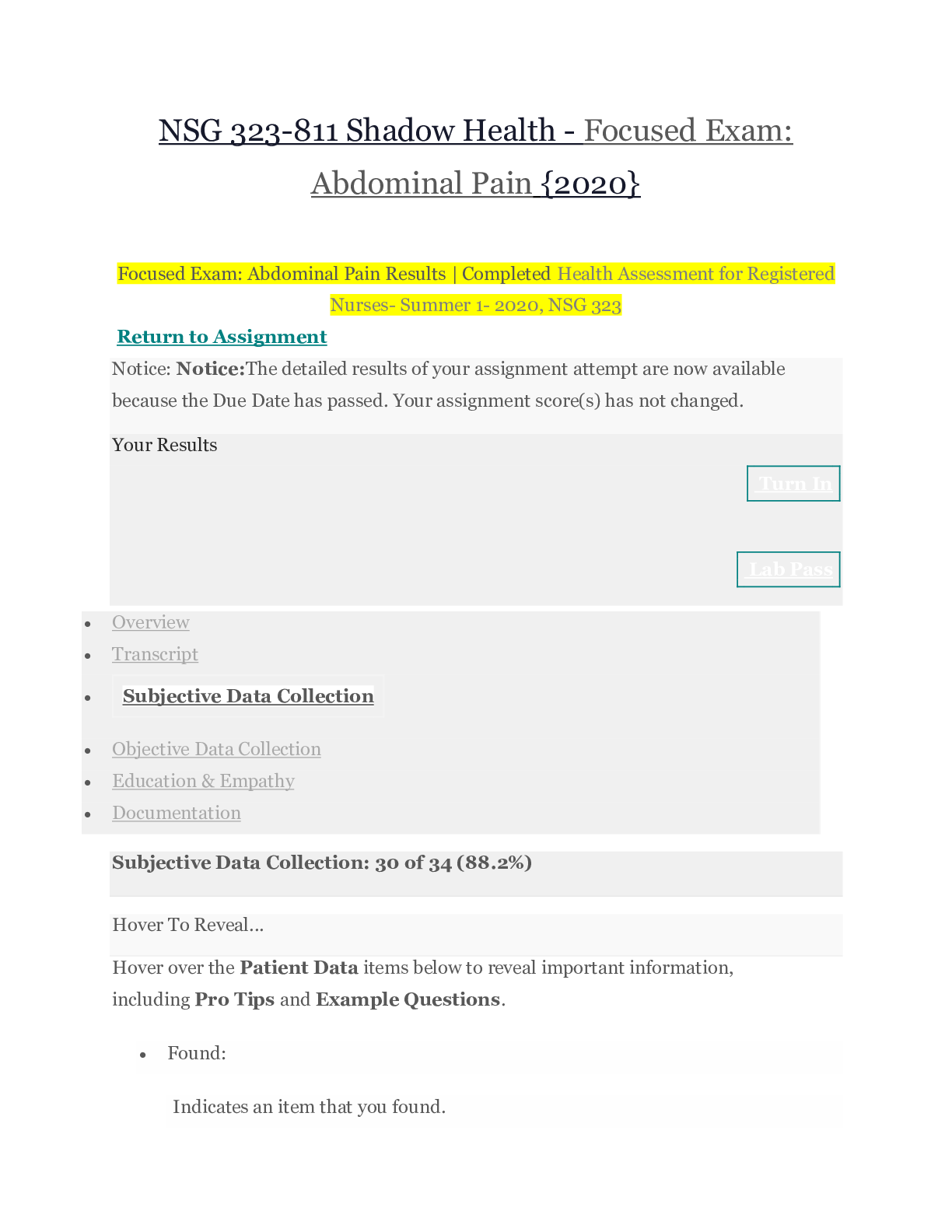*NURSING > SHADOW HEALTH > Esther Parks abdominal pain - subjective data collection (Graded A) (All)
Esther Parks abdominal pain - subjective data collection (Graded A)
Document Content and Description Below
Subjective Data Collection: 28 of 32 (87.5%) Hover To Reveal... Hover over the Patient Data items below to reveal important information, including Pro Tips and Example Questions. Found: Indic... ates an item that you found. Available: Indicates an item that is available to be found. Category Scored Items Experts selected these topics as essential components of a strong, thorough interview with this patient. Patient Data Not Scored A combination of open and closed questions will yield better patient data. The following details are facts of the patient's case. Chief Complaint Finding: Established chief complaint Finding: Reports abdominal pain (Found) Pro Tip: Abdominal pain can be caused by problems in the underlying organs, peritoneum, muscles, or blood vessels, changes in electrolytes or other blood contents, or even anxiety. Asking for details about the pain helps to determine the origin. Example Question: Do you have any abdominal pain? Finding: Reports difficulty "going to the bathroom" (Found) Pro Tip: Understanding all of a patient's reason for visiting is an important foundation to establish. If there are multiple symptoms, follow up on each one during your interview. Example Question: Are you able to make a bowel movement? History of Present Illness Finding: Asked about onset, frequency, and duration of pain Finding: Reports a feeling of discomfort for the past five days (Found) Pro Tip: Whenever you are assessing a symptom or a health condition, inquiring about onset assesses the severity and the progression of the problem. Example Question: How long have you had stomach pain? Finding: Reports pain with gradual onset that worsened 2-3 days ago (Found) Pro Tip: Whenever you are assessing a symptom or a health condition, inquiring about onset assesses the severity and the progression of the problem. Example Question: Has the stomach pain changed? Finding: Asked about location of pain Finding: Reports pain in lower abdomen (Found) Pro Tip: Identification of the location of your patient's discomfort can provide important clues about its cause and how it should be best treated. Example Question: Where is your discomfort located? Finding: Reports pain is not localized (Found) Pro Tip: Identifying the location of your patient's pain provides important clues about its cause and how to treat it best. Example Question: Is the pain in a specific spot? Finding: Reports attempts to treat pain by drinking small sips of warm water (Available) Pro Tip: Flank pain often occurs with disorders of the urinary tract. When a patient complains of flank pain, assess for co-occurring symptoms such as fever, chills, hematuria, and dysuria. Example Question: Do you have pain on your sides? Finding: Confirmed pain rating on a scale Finding: Reports pain rating of 6/10 (Found) Pro Tip: For many people, it is difficult to clearly describe pain. Asking your patient to rate her pain on a scale from 0 to 10 develops a consistent measure of pain severity. Example Question: How would you rate your pain on a scale of one to ten? Finding: Asked about character of pain Finding: Describes pain as dull and crampy (Found) Pro Tip: Asking your patient to describe her pain helps identify its cause and the severity. Patients may not know how to answer, so you may need to suggest words like sharp, dull, burning, throbbing, or shooting. Example Question: Can you describe the pain? Finding: Reports pain is intermittent with aggravating factors (Found) Pro Tip: It's important to ask your patient if her pain is constant or intermittent in order to determine her level of discomfort and identify the cause of the pain. Constant pain is often best managed with around-the-clock pain medications. Example Question: Is your pain constant? Finding: Asked about treatment and relieving factors Finding: Reports that resting helps (Found) Pro Tip: It's important to assess the nature of pain by asking about relief. If you know your patient is taking pain medication, asking about the medication's effectiveness can help you adjust treatment as needed. Example Question: What relieves your pain? [Show More]
Last updated: 2 years ago
Preview 1 out of 39 pages
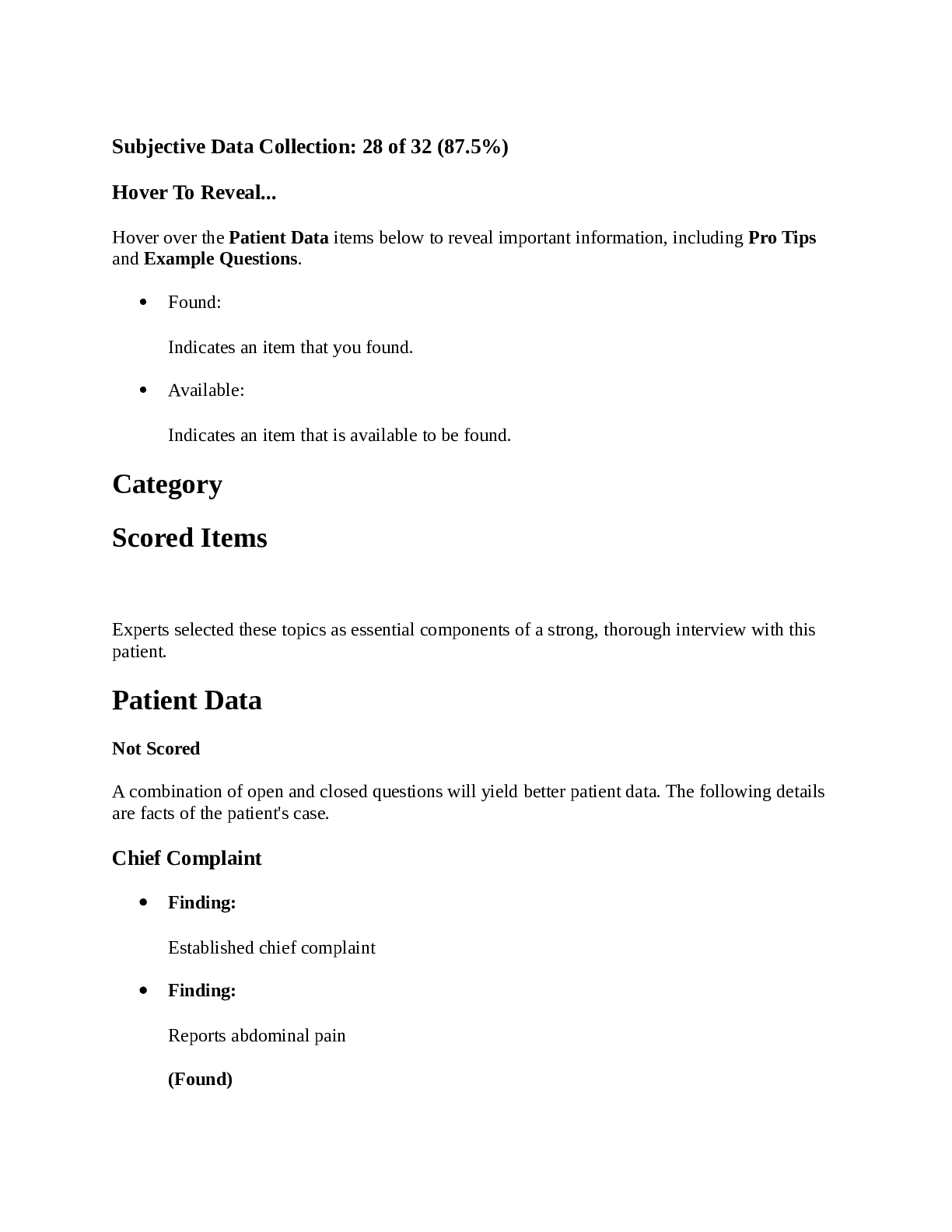
Buy this document to get the full access instantly
Instant Download Access after purchase
Buy NowInstant download
We Accept:

Reviews( 0 )
$14.00
Can't find what you want? Try our AI powered Search
Document information
Connected school, study & course
About the document
Uploaded On
Jan 08, 2022
Number of pages
39
Written in
Additional information
This document has been written for:
Uploaded
Jan 08, 2022
Downloads
0
Views
200


